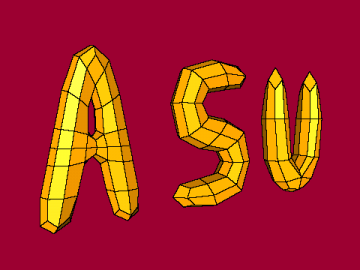

Its input control polygon can be any triangular mesh. Loop generalized triangular spline surfaces to a new G 1 subdivision surface type, see.

The Doo/Sabin surfaces have a piecewise biquadratic flavor the Catmull/Clark ones have a piecewise bicubic flavor. Both surface schemes yield smooth ( G 1) surfaces. Then, they also reformulated it for the case of control meshes of arbitrary topology. Catmull and Clark first generalized Chaikin's algorithm to uniform cubic B-spline curves and its tensor product counterpart. Such surfaces have a rectilinear control mesh, and after analyzing the tensor product algorithm, Doo and Sabin reformulated it such that it could also be applied to control meshes of arbitrary topology. Chaikin's algorithm can be generalized to tensor product surfaces in a straightforward way. 6 volume of the journal Computer Aided Design, 1978. Ĭhaikin's algorithm was the starting point for the initial work on subdivision surfaces, going back to two articles in the no. Q u in 1988 - although that work was only published in 1996, see. He also pointed out that Chaikin's algorithm was a special case of a class of algorithms described by G. de Boor discovered that “corner cutting” generalizations of Chaikin's algorithm also produce continuous curves. Sabin argued that Chaikin had invented an iterative way to generate uniform quadratic B-spline curves, see. Starting from a closed 2D polygon, and using a process of continual “chopping off corners,” he arrived at a smooth limit curve, see. He presented a curve generation method that did not fit the mold of any of the other methods of the conference. Gerald Farin, in Handbook of Computer Aided Geometric Design, 2002 1.8 SUBDIVISION SURFACESĪt the 1974 CAGD conference at the University of Utah, one of the presenters was the graphics artist G. Injectivity with respect to this coordinate system is crucial but not always present in subdivision schemes and the lack of second-order differentiability with respect to the coordinate system presents a challenge for characterizing shape. For example, since these rings contract ad infinitum, it is necessary to use, in the limit, a differential geometric characterization of smoothness: smoothness is measured in a natural local coordinate system. (The word ‘ring’ will not lead to confusion since no rings in the algebraic sense will be considered in this paper.) The infinite sequence of nested surface rings no longer shares all properties of the underlying splines. circular annuli formed by matching up the boundaries of the spline patches (see Figure 5, right). Here, the surface has the structure of a union of spline rings, i.e. points where n ≠ 4 quadrilateral domains join. To highlight the differences between spline surfaces and subdivision surfaces, we focus on the neighborhood of extraordinary points, e.g. We focus on schemes of type pQ4 and dQ4 that result in quadrilateral patches the analysis and structure of other subdivision schemes is analogous.

Refinement schemes (initial meshes top, refined meshes bottom). This already confirms that for most schemes the first step does 8 or 16 times as much damage as the second, and so fixes will probably take the form of modifying the coefficients for the first iteration or possibly the first two, in ways which depend on the actual geometry, and are designed to minimise the artifacts.įig. 2. Tools for analysing these are not yet well-developed, but we can see that spatial Fourier analysis will be one of the important ones. They are called first-step artifacts because it is the first subdivision step which makes them explicit. By Shannon's sampling theorem only components of spatial frequency up to half the vertex frequency are justified by the data, and so these ripples are definitely artifacts. Malcolm Sabin, in Handbook of Computer Aided Geometric Design, 2002 12.7 FIRST STEP ARTIFACTSĪ new issue, becoming visible as subdivision surfaces start to be used for commercial work in commercial systems, is that the original topology of the polyhedron shows through, in the form of ripples whose spatial frequency is that of the original vertices.


 0 kommentar(er)
0 kommentar(er)
